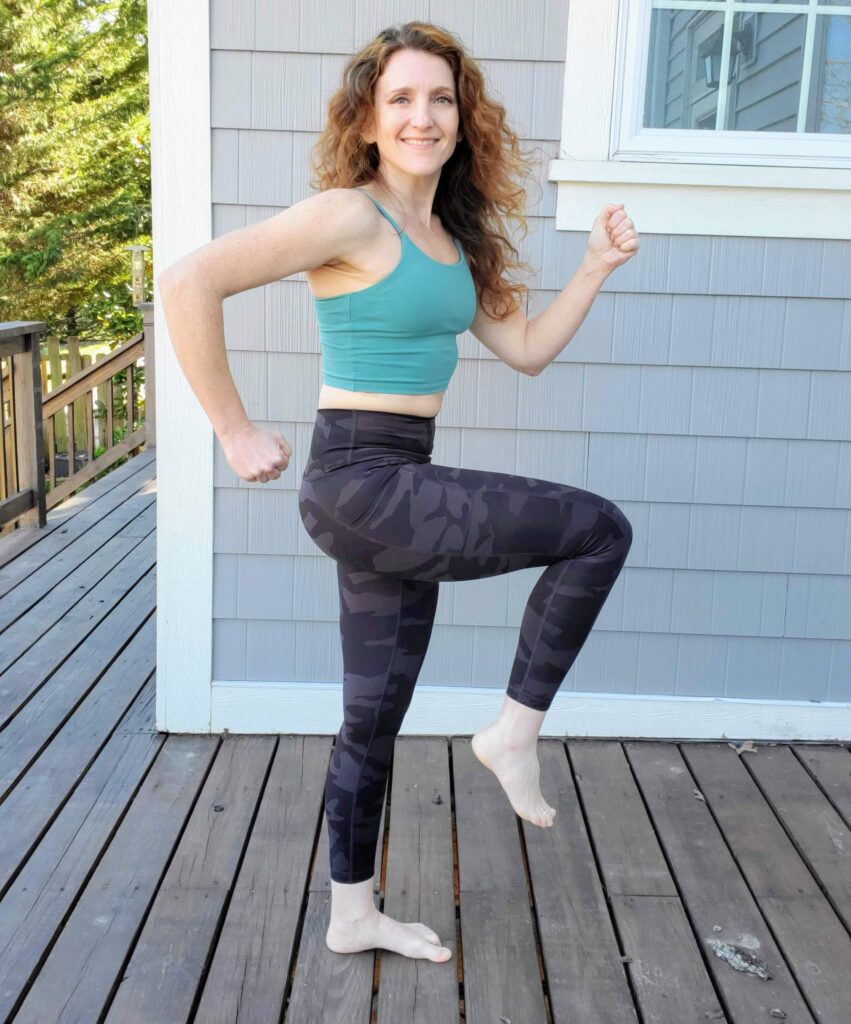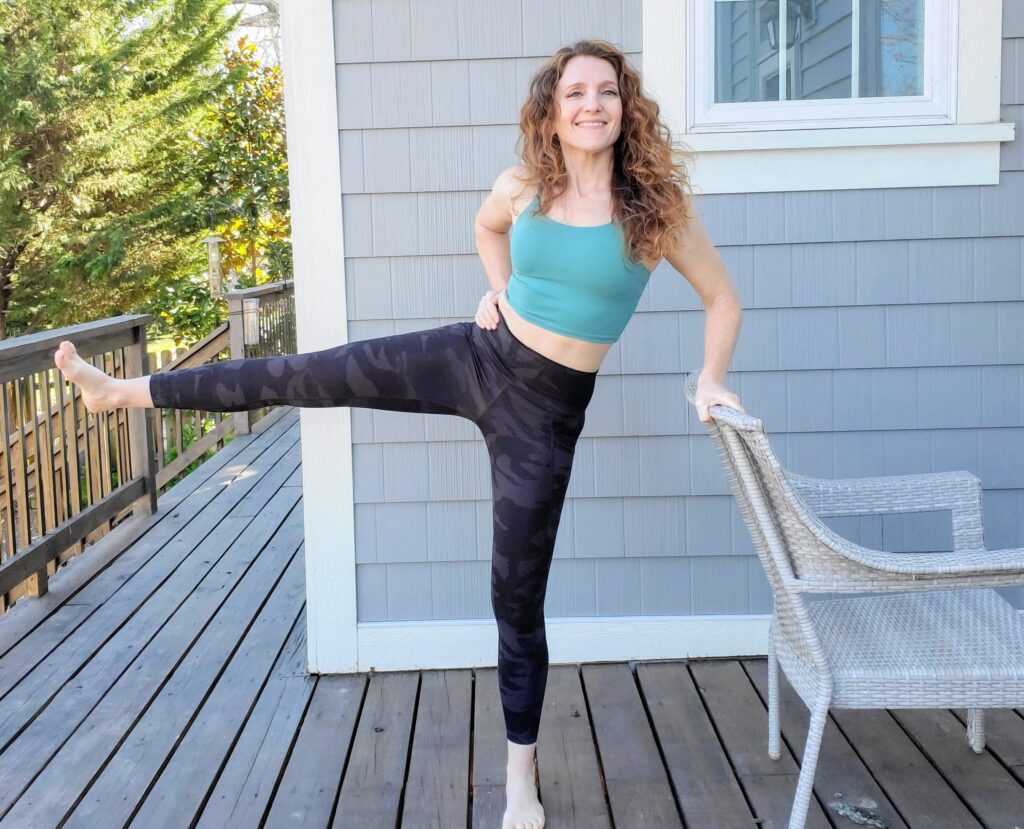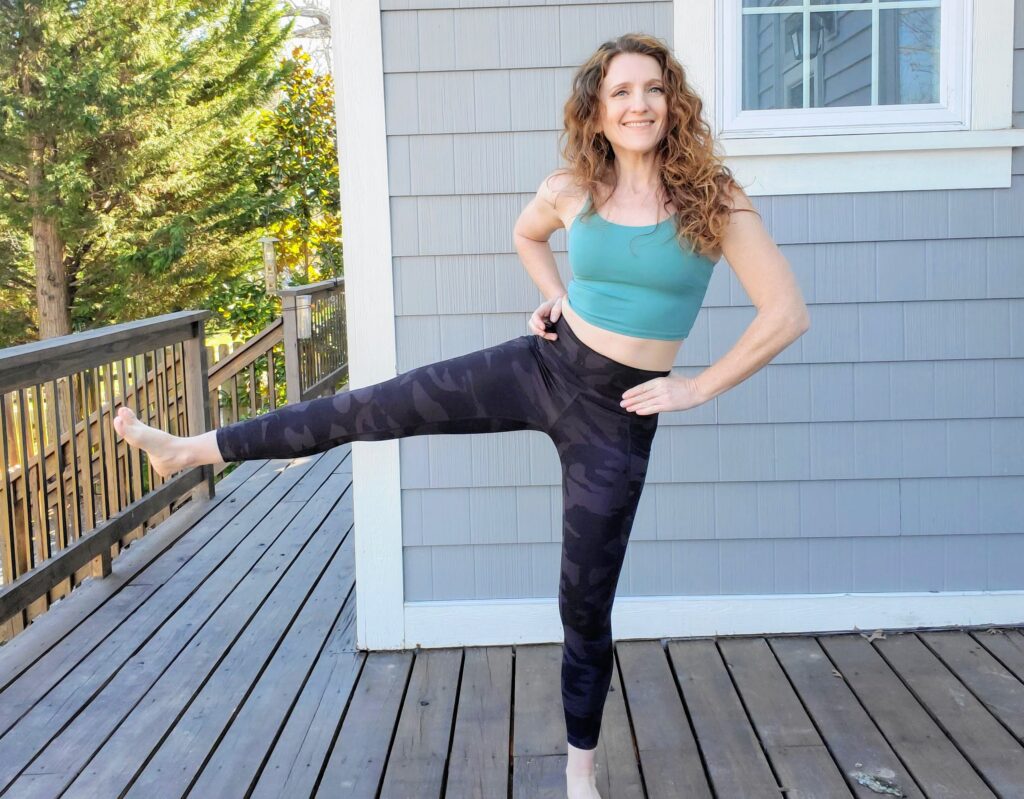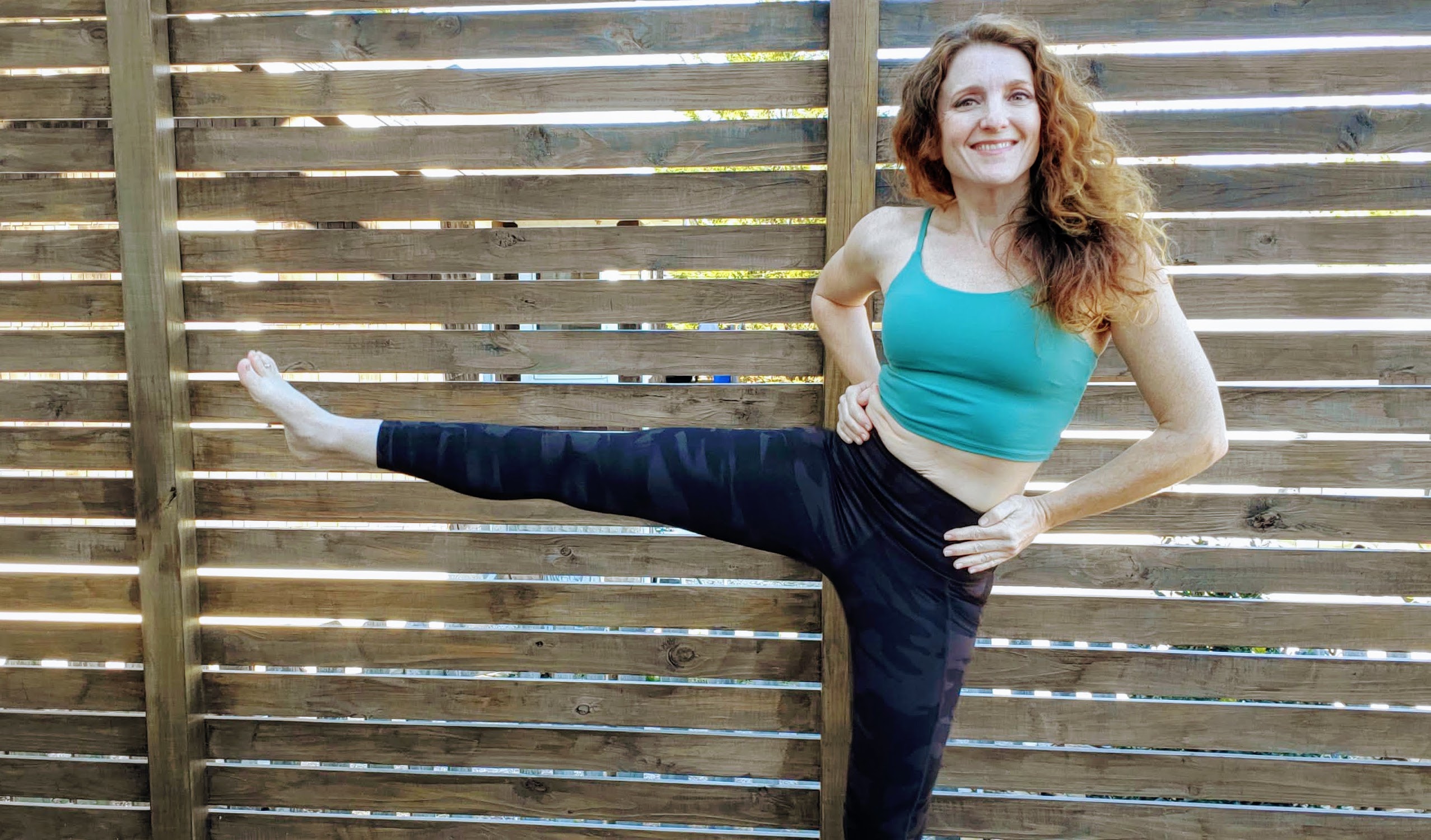If you'd like a simple, follow-along balance routine for runners, check out mine on YouTube.
Balance is a big buzz word lately. There’s work/life balance or balancing marathon training with a hectic schedule.
But I want to talk about real physical balance, like being able to stand on one foot with your eyes closed. Excellent balance could be the key to staying injury free.
Why Is Balance Important for Runners?
You may have heard that running is simply a series of hops from one foot to another, so it makes sense that we need to be able to balance on one foot, even if it’s for a split second. But I would guess that very few runners actually train their sense of balance so I’m going to go over why this is important and just how simple this is to do.
Several scientific studies have shown that when a group of athletes trains specifically for better balance, their risk of ankle injuries goes down versus the control group. One study had the participants use a wobble board for several months and they found that two results were at play. The muscles surrounding the ankles got stronger and therefore controlled the ankle in a more stable position, which certainly is what you’d expect from a physical training program working the ankles.
Balance Trains Your Brain
The second thing the researchers found was that the brain got better at becoming aware of the foot’s position relative to the ground and other obstacles. So the brain got stronger at the same time.
This phenomenon of being aware of how your body parts move in relation to your world is called proprioception. And it’s extremely important to have a good sense of it to be able to run effortlessly and in control, not to mention avoid injuries AND potholes.
So working on balance on a wobble board works your ankles and your brain. Those are very important, of course, but where it gets really exciting is how balance work starts a chain reaction of good results.
How Balance Helps the Entire Chain
Have you ever suffered an IT Band injury? The iliotibial band is a long band of connective tissue that runs along the outside of your thigh connecting your pelvis to your knee, inserting into the top of the shin bone. It’s a common point of irritation and injury in runners and many think that it’s from overuse or too much running, too soon. While that definitely can be the cause of IT band issues, the culprit could instead be an ankle injury on the opposite leg.
By strengthening the ankle, you are less likely to compensate for an injury with poor form on your good leg, and when you are strengthening your brain’s awareness of where your foot is in time and space, you are less likely to twist your ankle in the first place.
How Balance Work Helps Your Stride
What else happens when we train our ankles? We get increased ankle mobility and flexibility, which can help your stride. Runners only need to be flexible, that is have a wide range of motion, in 4 places: the big toe, the ankles, the hips as they extend, and the thoracic spine. If you have nice, strong, flexible ankles, your push off the ground will be far more efficient.
Simple Balance Exercises
Hopefully I’ve convinced you to invest in a little balance training. But what are we talking about here? We runners just like to run and we coaches are always saying there’s all these other things to do like strength training and maybe cross training, and drills… so I get that you don’t want to add yet another “thing” to your routine. But these are quick and easy, well at least, they will be easy once you get the hang of them.
Balance on One Foot
The first thing to do is assess your baseline. Take off your shoes and set a timer for 30 seconds. Raise one knee so your thigh is parallel to the ground, start the timer and close your eyes. Can you stay balanced? It helps to hold your running form while you balance. Activate the glute on the planted foot, keeping your hips tucked underneath you. Keep your shoulders back, and make a 90-degree angle with the elbow opposite the plant foot to mimic a mid-stride stance.

If you fall over before the timer goes off, you’ve got some work to do. Practice a few sets of this every day until you can comfortably balance on each leg for 30 seconds.
Leg Swing
The next exercise is the leg swing. Many runners do leg swings as part of their warm up routines. Part of it is to improve range of motion in the hips and the other part of it involves balance and control. Staying in control while you’re not on the ground during the swing phase is a key part of efficient form.
Start by standing and holding on to something like a wall or a fence for balance. Stand on one leg, and swing the other leg ten degrees forward and backward, controlling the swinging leg and working up to 30 degrees of swing front to back.

Once you’ve mastered that, step away from whatever you are holding on to, and do the swings without holding on to anything. Pay attention to your knees, and try to avoid inward and outward rotation during the movement. For even more challenge, swing the opposite arm to meet the swinging leg in its forward position.

Once you become a master at the single leg balance and the no holding on leg swing, it’s time to up the ante. Try standing on something wobbly for the single leg stands like a BOSU ball or even a rolled up yoga mat. Repeat the progression of becoming comfortable with balancing with your eyes closed on an uneven surface for 30 seconds.
Next Level Balance
For an even tougher challenge, add some momentum to your balance drills by bounding on one leg. This is a tough test of functional balance, and it’s for athletes whose balance imperfections may not be noticeable until seriously challenged.
Start in a runner’s stance balancing on one leg, and leap onto the opposite leg so that you land in an identical stance. Jump from your left leg onto your right leg, with the left arm swinging, in an exaggerated running hop. When you land, hold the position and stick the landing, like a gymnast at the Olympics. Your want knees and torso straight ahead and your pelvis level.
Then you can try bounding front to back, back to front, side to side, and diagonally to maximize your functional balance in all directions.
These exercises don’t need to take a lot of time. Five minutes a day or even 3 times a week is really all you need.
Having an excellent sense of balance might not be directly responsible for nabbing your next PR, but stability plays a major role in your ability to progress as a runner, especially if it prevents you from getting injured.

